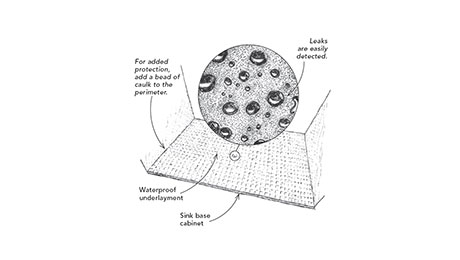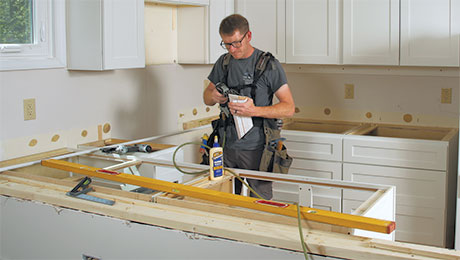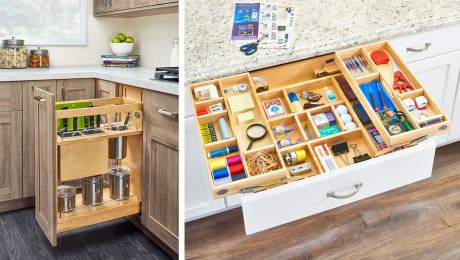Q:
I’m having hardwood cabinets built that I want to finish myself with a limed-oak look that I’ve seen on Smallbone (a British cabinet company) cabinets. I’ve read that the way to get the limed finish is first to bleach the wood, then put on a weak liming solution and later apply a top coat. Can you tell me how the process goes? Should I specify red oak or ash, and what finish materials will I need to get the limed look?
June R. Krieg, Chesterfield, MO
A:
Vic DeMasi of Monarch Painting in West Redding, Connecticut, replies: Limed oak refers to rubbing finely crushed limestone over raw oak. The open-grained pores of oak pick up particles of limestone, highlighting the wood. In my 17 years as a painter, I’ve never seen the process or done it. All references I know are from England and are out of date. The physical characteristics of the oak used in English furniture and construction would be an important consideration for any craftsman intent on duplicating the process.
Because the cabinets haven’t been made yet, I would choose an open-grained wood whose natural color most approximates the base color that I want the finished cabinets to have. If you pick white ash, which has a light, linen-white color, you won’t have to bleach at all. Bleaching is a dangerous and involved process that exposes the raw wood to water, which can warp wood and attack glue joints. Although I have had decent results with commercial two-part bleach systems, more often than not, bleaching yields unsatisfying results.
Have your cabinets made from white ash, and finish them with an oil glaze and a top coat to get the limed look. Oil glaze is made by mixing equal parts white oil paint, glazing liquid and paint thinner. A touch of the paint pigment raw umber or black can be added to take the edge off the white. This glaze is painted over the wood, then rubbed off with paper towels. You can rub it off immediately or leave it on a few minutes, but no longer. The length of time you leave it on determines how much you highlight the cabinets. Any color of oil paint can be substituted in the glaze mixture, which allows you to highlight in the color of your choice. I usually get the best results with an off-white tone.
Make samples on scraps of wood or inside cabinet doors to determine how much glaze you should remove and to get a glaze color that you like. Making samples often is an involved, time-consuming process, returned to several times over several days. The fact that the glaze changes color when it dries complicates the matter.
After the cabinetry is highlighted with the glaze and allowed to dry, it should be finished with two coats of clear finish. Oil varnish or polyurethane are acceptable but will yellow with time. This yellowing is sometimes desired to achieve an old look. I prefer Varathane Diamond water-base finish (The Flecto Co., Inc., 1,000 45th St., Oakland, Calif. 94608; 800-635-3286) because it’s less toxic and doesn’t yellow with age. The best choice of sheen is eggshell or satin to retain the hand-rubbed look. Allow each coat to dry and sand it with 400 emery or 220 oxide and wipe the work with a tack cloth after each coat. Keep in mind that the varnish will change the appearance of the finish—sometimes dramatically. Again, experiment with samples to determine the extent of the color change.

























